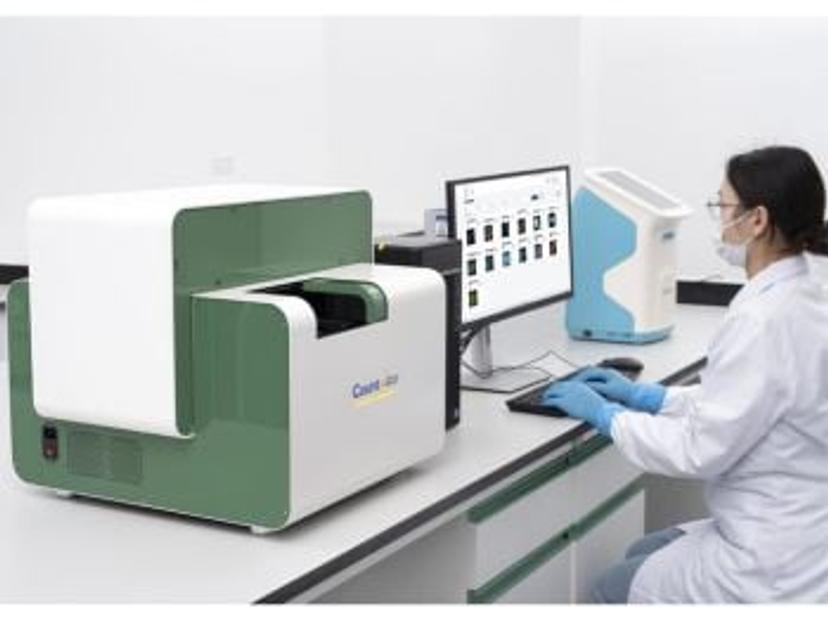Patient-derived organoids open doors to personalized medicine
Dr. Kangxin He at Zhejiang University has developed a high-throughput drug screening platform using patient-derived organoids to identify the best treatment for individual patients
3 Jun 2024

Recent advances in organoid technology have opened the possibility of revolutionizing basic research, drug discovery and development, and patient treatment.
Scientists are exploring the feasibility of using patient-derived organoids (PDOs) to develop and test personalized and regenerative medicine for certain cancer subtypes. Although this shows promise, broad adoption of organoids in drug discovery studies still faces many challenges, such as inconsistent quality, poor yield, slow data acquisition, and inaccurate data processing.
We spoke to Dr. Kangxin He, an Assistant Professor in translational medicine at the First Affiliated Hospital, Zhejiang University School of Medicine, to learn more about developments in organoid technology. Through industry-university and engineering-medicine collaborations, Dr. He's translational medicine research department leverages genetics and clinical approaches, coupled with cutting-edge organoid technology to develop and advance academic research, drug development, diagnostic, and clinical applications. This organoid research and the collaborations to overcome the challenges of using organoids, are providing long-term support for academic research, drug development, diagnostic, and clinical applications.
“Organoids resemble physiological functions and disease mechanisms in the human body, and they allow for high-quality development of innovative drugs and companion diagnostics,” Dr. He explains. “Organoids are one of the most promising cell sources for autologous regenerative medicine.”
Organoids facilitate the decision-making process during anti-tumor drug selection in personalized medicine.
Dr. Kangxin He, The First Affiliated Hospital, Zhejiang University School of Medicine
Anti-tumor drug decision making
Dr. He has developed a high-throughput drug screening platform using patient-derived organoids (PDOs) to identify the best treatment for individual patients. “Organoids are an ideal in vitro model and will replace cell line and animal models as well as 90% of human trials in drug development. Organoids facilitate the decision-making process during anti-tumor drug selection in personalized medicine.”
High-throughput drug screening is commonplace in drug development, and there are many tools in the marketplace that aid with imaging and analysis. The use of PDOs adds several challenges to the development and maintenance of the platform along with difficulties around data acquisition, and data/image processing. The major challenges the team have faced in setting up a PDO high-throughput platform are twofold explains Dr. He, “The structure of three-dimensional (3D) organoids is much larger than that of two-dimensional (2D) cell culture, and traditional microscopic photography techniques for the latter cannot fully meet various observational needs; on the other hand, there are no available tools to me to help efficiently track particular organoids and wells.”
The Castor S enables me to monitor the morphological changes of the vital organoids in a very cost-effective way.
Dr. Kangxin He, The First Affiliated Hospital, Zhejiang University School of Medicine
Imaging challenges
Dr. He considered a variety of organoid imaging and analysis instruments in his quest to find a solution to his imaging and tracking needs. “First, I considered the traditional inverted phase contrast microscope equipped with charge-coupled devices (CCD), but it is time-consuming to manually rename image files on a personal computer, usually it takes one hour to photograph a 96-well plate.”
Dr. He considered complex high-content and high spec instruments but decided these were too complicated for his research, and expensive. “For my research needs, the Castor S fulfills 90% of the needs for monitoring the morphology of vital organoids in a highly cost-effective and time saving manner.”
The Countstar Castor S2 system by ALIT LifeTech allows Dr. He to monitor organoid culture condition before drug treatment and organoid morphological changes during drug treatment in a few minutes rather than hours. Clear images are consistently acquired on all samples across the multi-well plates without human intervention. The AI-powered image processing algorithm can accurately identify organoids from complex background and generate comprehensive morphology data on individual organoids across a 96-well plate in just 30 minutes. This allows detailed drug-response data which enable recommendations on the best personalized drug treatment without delays. “The Castor S enables me to monitor the morphological changes of the vital organoids in a very cost-effective way. We can easily access well-organized image files at any time, and the AI helps me recognize the morphology and morphological changes of organoids in suitable visual and data forms,” shares Dr. He.

Furthermore, Dr. He explains the cost saving in his team for high-throughput laboratory work, “My purchasing decision is made based on the evaluation between the depreciation of fixed asset (Castor S) and man-hour cost. After carefully weighing the pros and cons, including personnel expenses and the depreciation, we think it is economical to buy the Castor S if we culture more than three 96-well plates of organoids.”
The future of PDOs in drug discovery and research
The future of the use of organoids in drug development is exciting says Dr. He, “Organoids are an ideal in vitro model and will eventually replace most cell line and animal models as well as human trials in drug development. Organoids facilitate the decision-making process during anti-tumor drug selection in personalized medicine. As a cell source, organoids could better support the development of regenerative medicine.”
In drug discovery, organoids are a viable alternative to animal models for high-throughput screening assays. Organoids are 3D miniaturized versions of organs or tissues that are derived from cells with stem potential and can self‐organize and differentiate into 3D cell masses, thereby reflecting the morphology and functions of their in vivo equivalent. Organoid culture is an emerging 3D culture technology, and organoids derived from various organs and tissues, such as the brain, lung, heart, liver, and kidney, have been generated. The beauty of organoid culture systems when compared to traditional cultures is the conservation of parental gene expression and mutation characteristics. Another huge benefit of organoids in research, is the maintenance of the biological characteristics of the parental cells in vitro.

